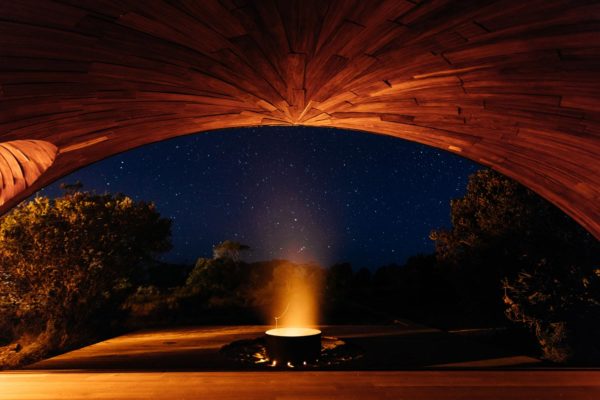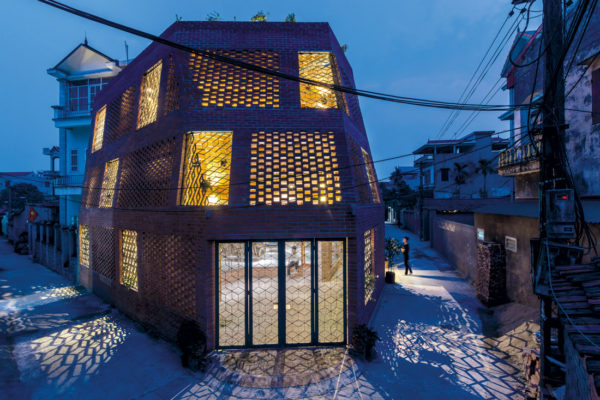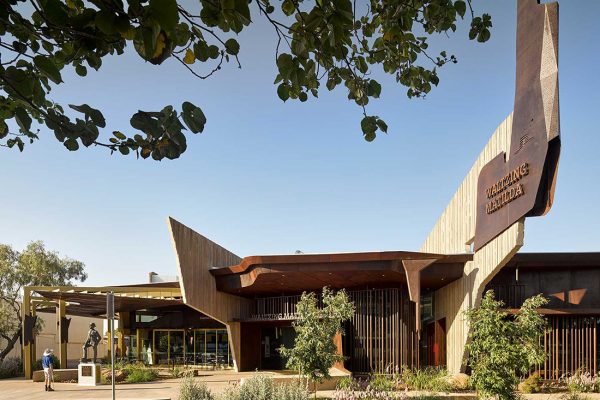What makes a project stand out in a particular region? Why does regionalism in design count in today’s world of increasing urbanisation? We explore….

May 9th, 2019
An in-depth understanding of an area’s climate, cultural influences, local materials or topography can go a long way in informing the architecture and design of a building or home. It is what perhaps makes one building more distinctive than many others in that region. Structures are not only site-specific; they are built in response to the local culture and climate of that place. This is at the core of regionalism.
In a time of constant evolution and change, preserving a sense of place and identity has surfaced as exceedingly valuable. This has led to a paradigm shift in the overall design thought process too. Architects are now looking to more natural forms, local conditions or homegrown materials to set the tone for a project and help provide a genuine experience to its inhabitants.
At the INDE.Awards, we honour this renewed approach to design, one that takes community, locality, sustainability and human experience into consideration. Here we explore a few projects from the INDE’s past and present shortlists that embody the essence of regionalism in design.
INDE’s 2018 ‘Best of the Best’ winning projects, krakani lumi by Taylor & Hinds Architects is one of the most excellent examples of regionalism. This standing camp in Tasmania’s North East National Park, tells the heartfelt tale of its surrounding landscape and community through its design. In terms of materiality, the individual structures have been clad in charred Tasmanian timber, cleverly camouflaging the camp when not in use.
The exteriors are robust and resilient to the corrosive sea air. Internally, quilted wallaby furs, also referred to as reore, have replaced traditional bedding lending a more authentic feel to the experience. The interiors are a stunning reflection of the seasonal shelters of Tasmania’s oldest populace.

Photo by Adam Gibson, courtesy of Taylor and Hinds Architects
With regionalism so profoundly rooted in the idea of creating visual harmony between a building and its surroundings, Brick Cave – a 2019 INDE.Awards shortlist project – definitely deserves a mention.
Designed by Vietnam-based H&P Architects, this Hanoi-based structure has been designed to reflect its natural environment (a cave, more accurately). What’s truly interesting though is how the building looks towards embracing nature and preserving local tradition in an area otherwise brimming with urbanisation. Locally sourced bricks make up the core of this building.
As a material that is widely used in rural Vietnam, bricks seemed like a natural choice for the architects. Two layers of brick walls ensure the passage has enough light, air and rain where needed while eliminating excessive, sunshine, dust and noise from travelling indoors. With a combination of closed and open spaces, inhabitants are able to experience a sense of a large free space in sync with the comfort and safety of a private home.

Photo by Nguyen Tien Thanh, courtesy of H&P Architects
An ode to the epic Australian ballad, the Waltzing Matilda Centre in Winton, Queensland goes beyond its functional brief to include elements that provide a fitting response to the local culture and landscape of the region.
Cox Architecture redesigned the interpretative centre – also a 2019 shortlisted project at the INDE’s – which is interestingly also the biggest driver for grey nomad tourism in the region. The rugged landscape and the unique geological features of the area can be seen reflected in the design of the building.
The design references elements like rock formations, water movement and billabongs, as a way of stirring the senses and creating an authentic Australian country experience.

Photo by Christopher Fredrick Jones, courtesy of Cox Architecture
Writer and poet Octavio Paz once said: “to be truly modern, we must first reconcile ourselves with our traditions.”
It’s amazing how these projects resonate so deeply with this idea.
When it comes to regionalism, design brands too can be seen stepping up. With an extensive presence across the Asia-Pacific market for commercial furniture (supply and design), Zenith embodies what it means to be local in a global context.
With a tailored approach towards design, it works closely with organisations to understand their needs, in turn providing solutions that help foster a culture of collaboration, productivity and sharing.
A searchable and comprehensive guide for specifying leading products and their suppliers
Keep up to date with the latest and greatest from our industry BFF's!

Sub-Zero and Wolf’s prestigious Kitchen Design Contest (KDC) has celebrated the very best in kitchen innovation and aesthetics for three decades now. Recognising premier kitchen design professionals from around the globe, the KDC facilitates innovation, style and functionality that pushes boundaries.

Create a configuration to suit your needs with this curved collection.

In the pursuit of an uplifting synergy between the inner world and the surrounding environment, internationally acclaimed Interior Architect and Designer Lorena Gaxiola transform the vibration of the auspicious number ‘8’ into mesmerising artistry alongside the Feltex design team, brought to you by GH Commercial.

Savage Design’s approach to understanding the relationship between design concepts and user experience, particularly with metalwork, transcends traditional boundaries, blending timeless craftsmanship with digital innovation to create enduring elegance in objects, furnishings, and door furniture.

Adaptive reuse is all the rage across the design industry, and rightly so. Here, we present a selection of articles on this most effective approach to sustainability.

Architecture with Pride (AWP) 2024 has kicked off with style! The Architecture Ball just took place in Sydney, with more events to follow soon.
The internet never sleeps! Here's the stuff you might have missed

Wood Marsh, a practice that spans 40 years, has been the first to design many of Melbourne’s landmark infrastructure projects – including the monumental noise walls along the Eastern Freeway (the first non-building to receive the Victorian Architecture Medal), Eastlink, the Geelong bypass and the pedestrian bridge at the west end of Bourke Street. The […]

Designed to drive positive change, promote sustainable practices and cultivate inclusive communities, the recent launch of the Parliamentary Friends of Australian Design will champion the role of urban design in shaping the nation’s identity.